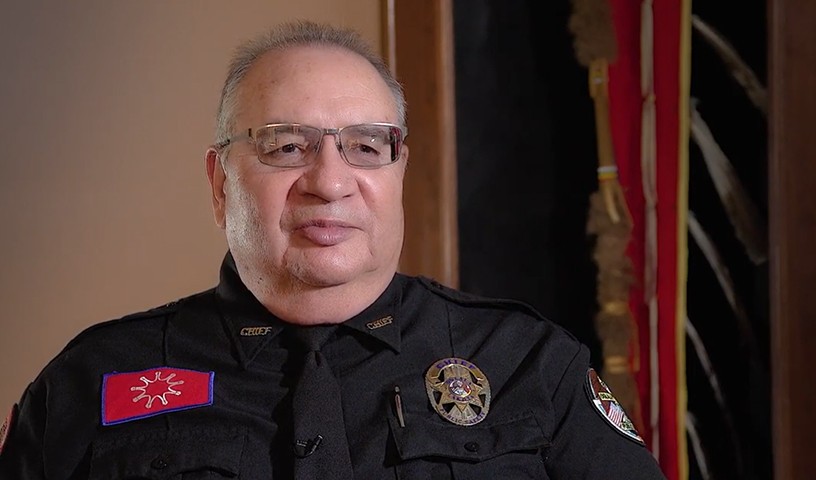Oglala Sioux Tribe Police Chief: FirstNet is critical in life-safety issues in Indian Country

One of the challenges we had as a department was improving communication – especially when it came to officer safety and safety of the public. So we looked at various ways we could enhance our ability to communicate across the reservation.
We’re the second largest police department in Indian Country in the United States. So we looked at systems to help our department and improve our service to the community in terms of response time. We were the first law enforcement agency in Indian Country to sign up for FirstNet. And it’s been a vast improvement for us.
We have 52 officers. And we cover 3,500 square miles on the Pine Ridge Indian Reservation. Even our police radios are somewhat limited in certain areas because of the terrain, low valleys and high points.
Communications challenges
I first realized there was a problem with communications in law enforcement when I was a director of law enforcement for the Bureau of Indian Affairs.
It was during 9/11. We had about 15 agents training at the FBI Academy in Quantico, Va. And we were asked to provide security at the Department of Interior building in Washington, D.C. We couldn’t communicate with them by telephone because all the lines were tied up.
The only thing we had was pagers. So we were able to text them and say: "Okay, you need to leave the class and report to the Department of Interior building as soon as possible."
As a nation, 9/11 showed a critical weakness in our law enforcement infrastructure.
First responder safety
Before FirstNet, we had a lot of areas across the reservation where officers would simply lose connectivity. There were times that we didn't have radio communication when responding to gun calls or emergency situations.
So it was critical in coming in as the new chief of police about a year-and-a-half ago to take a look at the infrastructure needs of the department. I sat down with the staff here. And it was actually our technology expert, Tawny Zimiga, who arranged a meeting. We talked about FirstNet and what FirstNet could do for us in terms of continuing communication in the event of an emergency.
The biggest selling point with the system was the ability for our dispatch to monitor the locations of our officers. Now we can tell exactly where that officer is so that other officers can respond to possible emergencies to assist them.
This is not only important for officer safety, but for our ambulance service. We have to be able to get our emergency management folks out in times of blizzards, tornadoes or community events. It's important we have the capability to work together. And it's incumbent upon us as a department to do whatever we can to speed our response to save people's lives.
The right infrastructure
A system like FirstNet is critical in life-safety issues in Indian Country. Many of our reservations don't have the infrastructure because of our isolated locations across the United States. So we have to develop our own services at many times to help our effort. It's a massive effort to get this infrastructure in place. On this reservation, through AT&T, we were able to get additional towers.
I may have somebody out here on dialysis or somebody in labor. And I need to get resources in here to get them to the hospital, simply because access to healthcare is also somewhat limited because of location.
In considering FirstNet, again, it came down to officer safety.
It's critical for connectivity throughout Indian Country. All of our tribes need to work together to demand additional resources. So regardless of what department you work for within Indian Country – whether it's the Bureau of Indian Affairs, tribal, county, local – that everybody has connectivity.
Indian Country has been left behind for so many years in terms of infrastructure development. We need to continue to look at better ways to address our issues.
FirstNet is a first step in moving in that direction.
Robert Ecoffey grew up on the Pine Ridge Reservation and started his law enforcement career in 1975. In April 2017, he came out of retirement to take over as police chief for the Oglala Sioux Tribe. He previously served as a police officer with the Oglala Sioux Tribe. Chief Ecoffey had a 36 year career with the federal government – with 25 in law enforcement – including as director of law enforcement for the Bureau of Indian Affairs and as a special agent with the U.S. Forest Service. He was the first Native American to serve as a U.S. Marshal in South Dakota. He holds a bachelor’s degree in criminal justice from Chadron State College in Chadron, Neb.